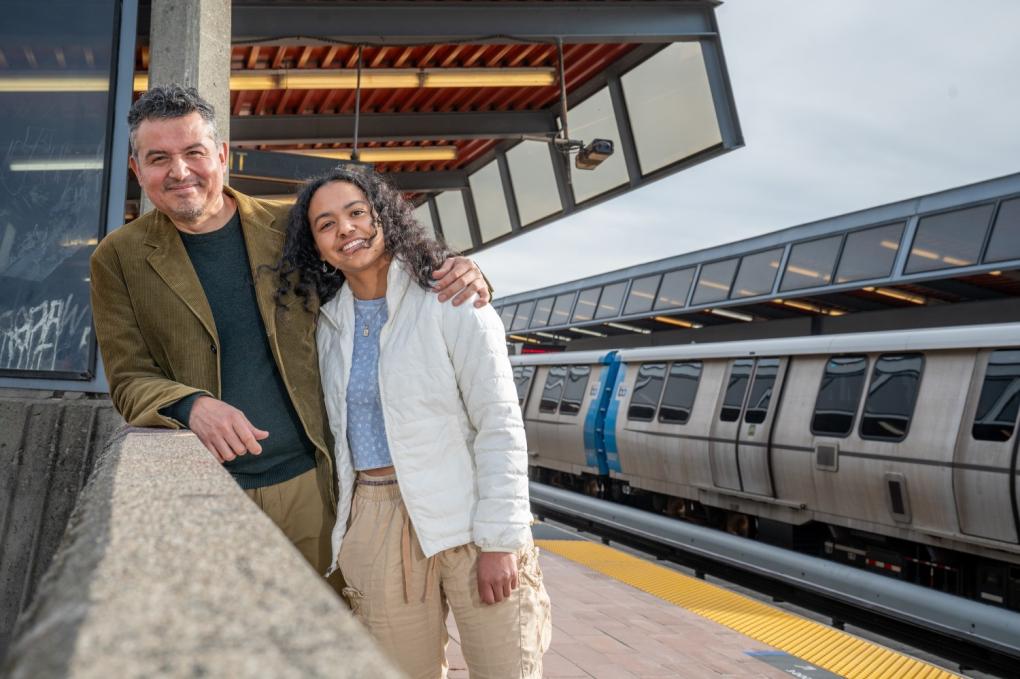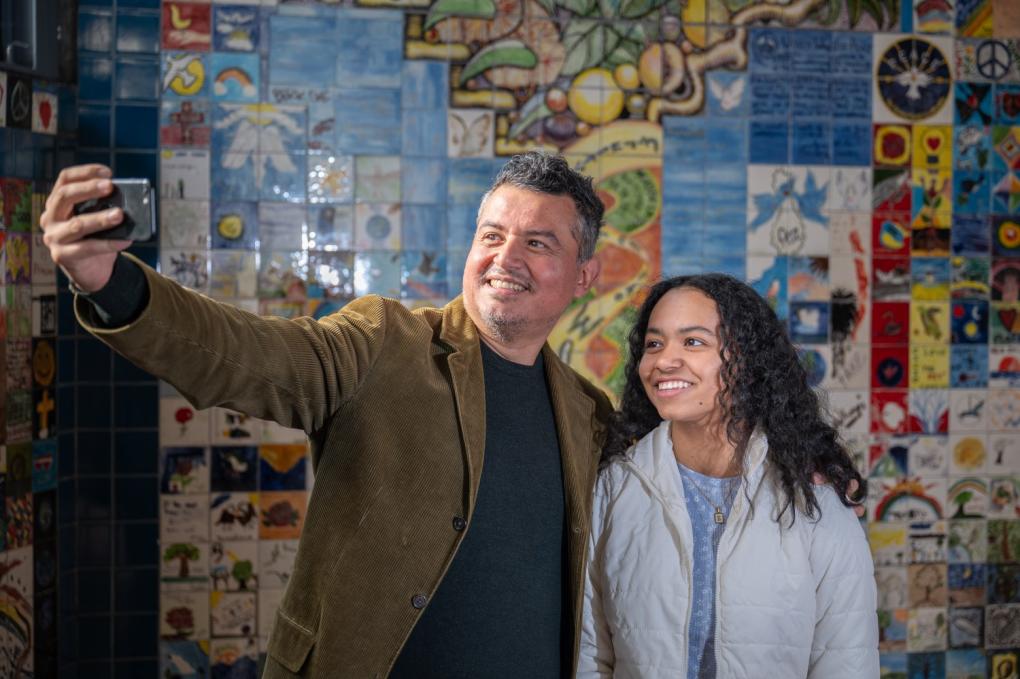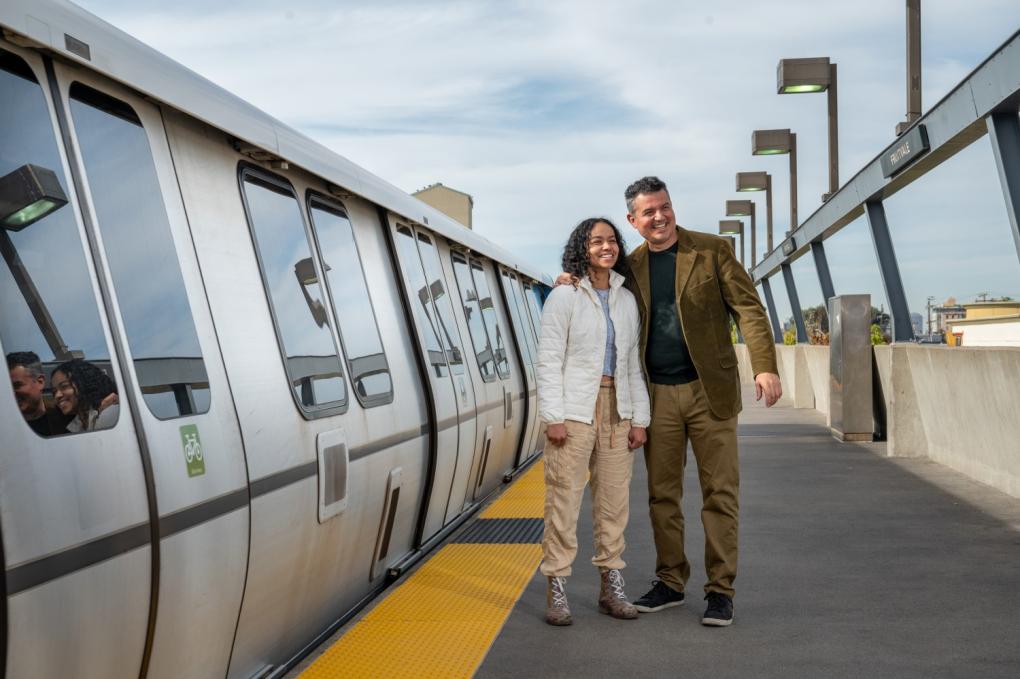BART Connects: A Bay Area dad uses BART to spend time with his teenaged daughter

Ed and Elyse Cabrera pictured at Fruitvale Station.
Do you have a favorite BART memory or story to share? Email a short summary to BART Storyteller Michelle Robertson at [email protected], and she may follow up to schedule an interview.
Ed Cabrera spent most of his childhood in San Francisco’s Mission District. When he was two years old, his family immigrated from Guadalajara, Mexico, and they settled on the ground floor of a three-story flat at 18th and Dolores, just a few blocks up from the BART station at 16th.
The Cabreras took BART pretty much everywhere – to school, to appointments, to the library, and especially to visit family in the East Bay. The Cabreras were the last remaining members of their extended family still living in San Francisco, and if they wanted to see grandma and grandpa and the cousins, an eastbound BART ride was required.
Today, Cabrera lives in the Laurel District of Oakland, and now he travels in the reverse direction to hang out with his teenaged daughter, Elyse, when she’s staying with her mom in San Francisco. Cabrera said he regularly uses BART "to facilitate spending time with my daughter and acclimate her to city living.”
Elyse rode BART as a kid here and there – she loved the trains so much the Cabrera household was overrun with Thomas the Tank Engine toys – but she didn’t rely on it like her dad did in his San Francisco youth. Mostly, her parents shuttled her by car to school, social activities, and extracurriculars.
“That was more so because of her mother’s preference, and that was fine. It had its advantages,” Cabrera said. “But it also had a lot of disadvantages.” One being she didn’t spend much time exploring her surroundings outside of a vehicle, he said.
“You don’t want to have a kid who grew up in a city and doesn’t know it,” Cabrera continued. “And there’s no better way to get to know a neighborhood or community than walking, riding transit, and talking to people.”

As his daughter grew, Cabrera wanted her to feel comfortable navigating the city independently, so he made a point to “transition Elyse out of the family car” and get her on public transportation to explore the neighborhoods beyond the Portola District, where she grew up.
Soon, Elyse was taking BART and Muni to meet friends at Dolores Park, to hang around the Castro, and to play mini golf at the course in the Mission District.
“It exposed her to different types of people,” Cabrera said. “What better place than BART to get to know the people around you? It’s the great equalizer!”
Cabrera and Elyse now spend much of their time together exploring the Bay Area. He doesn’t own a car, so most often, they take transit. In addition to riding BART to San Francisco to walk around the Mission and the Embarcadero, they’ll get onboard to visit Lake Merritt or head to their climbing gym – Elyse recently got her dad into rock climbing – and sometimes they’ll take it to explore the area’s regional parks. The pair plans to visit the Oyster Bay Regional Shoreline near Coliseum Station when Elyse is home from school.
Cabrera’s next transit challenge is getting Elyse comfortable on a bike. She's now a sophomore in college, and her campus is well-suited to biking.
Beyond getting her around the Bay, BART has also changed Elyse’s life, her father said. She's currently studying aerospace engineering, and Cabrera credits her interest in the field to early experiences riding BART and looking out the windows of the SFO AirTrain, watching the motion of the planes on the tarmac.

About the BART Connects Storytelling Series
The BART Connects storytelling series was launched in 2023 to showcase the real people who ride and rely on BART and illustrate the manifold ways the system affects their lives. You can follow the ongoing series at bart.gov/news.
The series grew out of BART's Role in the Region Study, which demonstrates BART’s importance to the Bay Area’s mobility, cultural diversity, environmental and economic sustainability. We conducted a call for stories to hear from our riders and understand what BART means to them. The call was publicized on our website, social media, email blasts, and flyering at stations. More than 300 riders responded, and a selection of respondents who opted-in were interviewed for the BART Connects series.